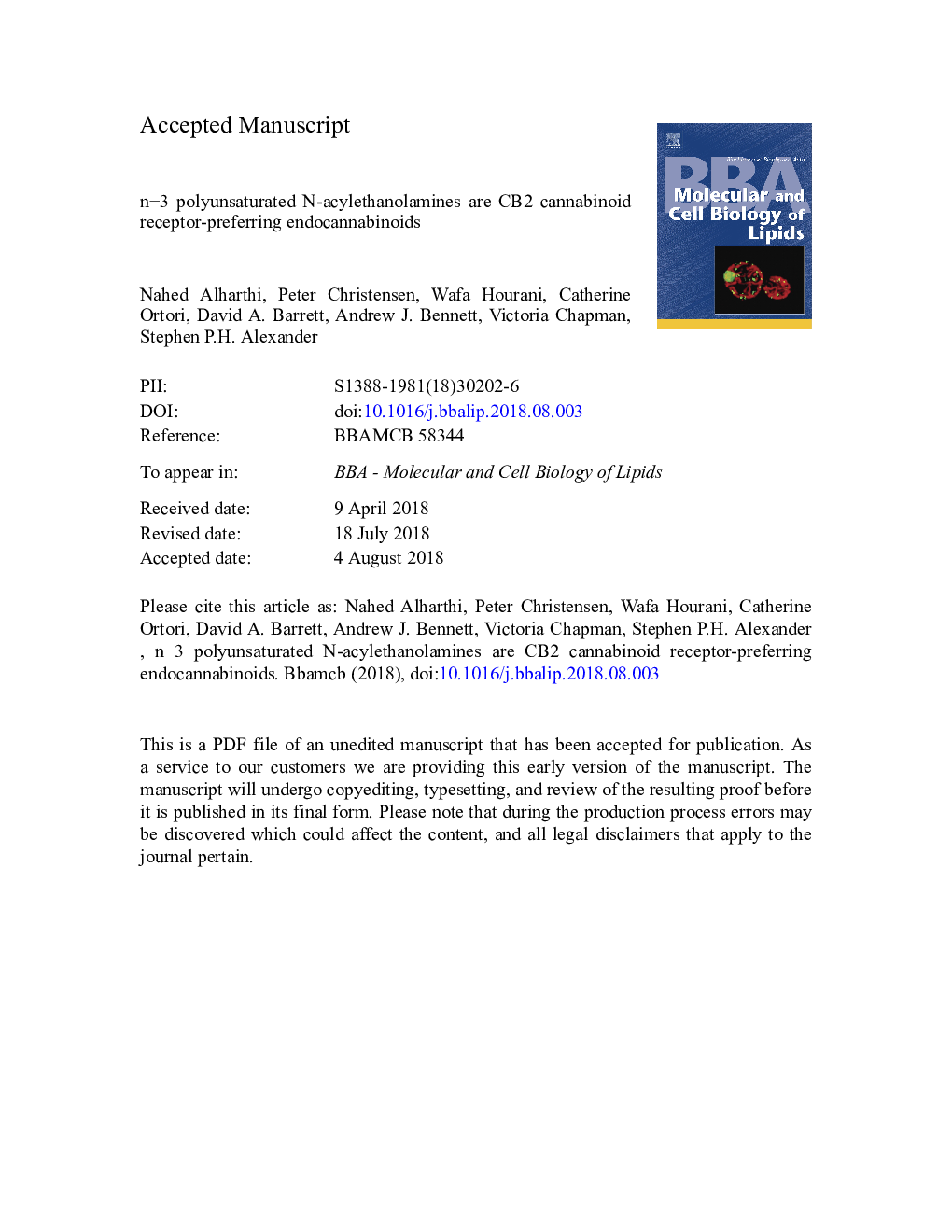| Article ID | Journal | Published Year | Pages | File Type |
|---|---|---|---|---|
| 10142917 | Biochimica et Biophysica Acta (BBA) - Molecular and Cell Biology of Lipids | 2018 | 23 Pages |
Abstract
Anandamide, the first identified endogenous cannabinoid and TRPV1 agonist, is one of a series of endogenous N-acylethanolamines, NAEs. We have generated novel assays to quantify the levels of multiple NAEs in biological tissues and their rates of hydrolysis through fatty acid amide hydrolase. This range of NAEs was also tested in rapid response assays of CB1, CB2 cannabinoid and TRPV1 receptors. The data indicate that PEA, SEA and OEA are not endocannabinoids or endovanilloids, and that the higher endogenous levels of these metabolites compared to polyunsaturated analogues are a correlate of their slow rates of hydrolysis. The nâ6 NAEs (AEA, docosatetraenoyl and docosapentaenoyl derivatives) activated both CB1 and CB2 receptors, as well as TRPV1 channels, suggesting them to be 'genuine' endocannabinoids and 'endovanilloids'. The nâ3 NAEs (eicosapentaenoyl, docosapentaenoyl and docosahexaenoyl derivatives) activated CB2 receptors and some nâ3 NAEs (docosapentaenoyl and docosahexaenoyl derivatives) also activated TRPV1 channels, but failed to activate the CB1 receptor. We hypothesise that the preferential activation of CB2 receptors by nâ3 PUFA NAEs contributes, at least in some part, to their broad anti-inflammatory profile.
Keywords
Related Topics
Life Sciences
Biochemistry, Genetics and Molecular Biology
Biochemistry
Authors
Nahed Alharthi, Peter Christensen, Wafa Hourani, Catherine Ortori, David A. Barrett, Andrew J. Bennett, Victoria Chapman, Stephen P.H. Alexander,
